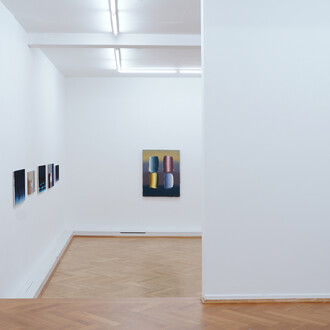Ernst Ludwig Kirchner (1880–1938), co-founder of the Brücke artists’ group, is widely regarded as the most important German Expressionist painter. One of the leitmotifs of his life and work is the quest for the ‘exotic’ and the primal, for far-off lands and cultures. Although he never ventured beyond the borders of Germany and Switzerland, his work bears witness to his passionate engagement with non-European cultures. Responding to social and artistic influences, he broke new ground, both personally and pictorially and created strikingly colourful images that conjure vividly imagined far-away worlds.
Tracing the artist’s progress through Dresden, Berlin, Fehmarn and Davos, Imaginary Travels sheds light on Kirchner’s life and career from 1909 to his death in the Swiss mountains in 1938. A selection of international loans, above all from Switzerland and the United States, allows us to bring together motifs recurring throughout his oeuvre and to highlight the central importance Kirchner placed on working from the imagination.
Thanks to the co-operation of the Dresden Museum of Ethnology, this exhibition is the first to trace Kirchner’s visits to the ethnographic collection and the profound influence it had on his work and creative practice. Sketchbooks, letters and historical photographs are presented in the context of important events in the history of non-European cultures – as Kirchner would have seen them around the turn of the century. The exhibition scrutinises Kirchner’s fervent enthusiasm for these cultures and addresses the complex issue of how to deal with the legacy of colonialism.
Imaginary Travels presents a comprehensive survey of Kirchner’s work after 1918, juxtaposing it with well-known early works of his time in Dresden and Berlin. Kirchner’s late work in Switzerland in the late 1920s singles him out as an uncompromising, progressive artist, ceaselessly trying to give adequate expression to a constantly changing world.
The exhibition brings together some 220 works – 56 paintings, 72 prints, four sketchbooks, ten sculptures, five textiles, 45 photographs as well as 26 ethnographic objects from 40 collections in seven countries. Among the exhibits are numerous important and rarely shown works, such as the painting The Drinker and Seated Girl (Fränzi Fehrmann), the bed Kirchner carved for his companion Erna Schilling and cast brass plaques from Benin.
Rein Wolfs, director of the Bundeskunsthalle, sums up the exhibition, ‘Ernst Ludwig Kirchner is one of the most prominent German Expressionist artists. The exhibition Imaginary Travels showcases his work and also addresses some of the more controversial aspects of his oeuvre, chief among them Kirchner’s appropriation of non-European cultures and his idealisation of Alpine Swiss popular culture. The exhibition brings together numerous outstanding works, some of them rarely shown, yet it also shines a critical light on the artist and his work.’
















